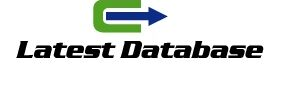In the industrial sector, Identifying Target your target audience and creating personas are essential steps to ensuring that your message reaches the right people. Unlike B2C markets, industrial audiences involve multiple influencers and decision-makers, such as engineers, purchasing managers, and directors. Each of them has different concerns, goals, and decision criteria that need to be understood for effective communication.
Industry personas are detailed representations Identifying Target of your ideal customers, created from real data. To develop them, it’s important to collect information such as:
Roles and responsibilities: Who makes the decisions and who influences the process?
Challenges and pains: What problems do your solutions help solve?
Information sources: Where they look for information, such as trade shows, technical blogs or social networks.
Digital behavior: Which channels do they prefer, such as LinkedIn or technical emails?
For example, an industrial valve manufacturer might create the persona “Lucas, Purchasing Manager”:
The Sales Funnel for Industries
In the manufacturing sector, the sales funnel Identifying Target is more than a blueprint – it’s the foundation for structuring effective marketing and sales strategies. This tool helps you map out the customer journey, allowing your industry to deliver the right message at the right time. Unlike B2C markets, the funnel in the manufacturing environment is longer and involves multiple influencers, such as purchasing managers, engineers, and directors.
The three main stages of the sales funnel are:
Top of the Funnel (Learning and Discovery): The customer identifies a problem or need, but does not yet know specific solutions. Here, your company russia email list should invest in educational content, such as technical articles or explanatory videos.
Example: A turbine parts manufacturer might publish an article on “How to Reduce Wear on High-Speed Equipment.”
Middle of the Funnel (Consideration): The customer already understands their problem and is evaluating solution options. This is the time to offer more specific materials, such as case studies and product comparisons.
Example: An automation systems supplier might send an e-book detailing the benefits of their systems across different industrial sectors.
Bottom of the Funnel (Decision): The customer is ready to buy, but needs a final justification for choosing your company. Customer testimonials, technical why is hydroponic gardening better than conventional gardening? demonstrations, and personalized proposals are ideal at this stage.
Example: An industrial paint company might upload a video showing how their product performs in a real-world environment.
Tools like HubSpot or RD Station help you track the progress of leads through the funnel, ensuring your sales team receives qualified contacts at the right time.
Content Strategies for Industrial Marketing Plans
In the industrial sector, technical content is the main bridge between your brand and your audience. Unlike markets where emotional appeal is predominant, in the industrial dating data sector, content must be informative, detailed and capable of solving specific problems. A successful industrial marketing plan should include content strategies in various formats.
Main content formats for the industrial sector:
Technical articles: Ideal for attracting engineers and technicians looking for detailed solutions.
Example: An article on “5 Methods to Increase Energy Efficiency in Industrial Production”.
E-books: Valuable tools for delving deeper into topics and capturing leads.
Example: An e-book on “How to Choose the Ideal Automation System for Small Industries”.
Technical videos: Practical demonstrations of products or processes.
Example: An equipment manufacturer can create videos showing how its machines work in real environments.
Case Studies: Real-life stories of how your solution helped a customer.
Example: A case study on how a robotics solution reduced costs by 30%.
Infographics: Visual summary of technical information.
Example: An infographic on “The Impact of Automation on the Metalworking Sector”.
In addition to educating, technical content strengthens your brand’s authority, positioning it as a reference in the market.
The Power of SEO in the Industrial Marketing Plan
SEO (Search Engine Optimization) is the foundation for increasing your industry’s digital visibility. It ensures that your company is found when potential customers search for solutions on search engines like Google. In the industrial sector, where searches are highly technical, SEO is essential for attracting qualified leads.
SEO Strategies for Industries:
Technical Keywords: Identify terms your customers use, such as “high precision CNC machines.”
Optimized content: Create articles, e-books and videos that answer the most frequently asked questions.
Local SEO: Optimize for regional searches, especially if your industry serves a specific market.
Backlinks: Partner with relevant websites to increase your website’s authority.
Companies that invest in SEO generate up to 50% more qualified leads , according to BrightEdge. In the industrial sector, where each lead represents a high average ticket, the impact is even greater.

